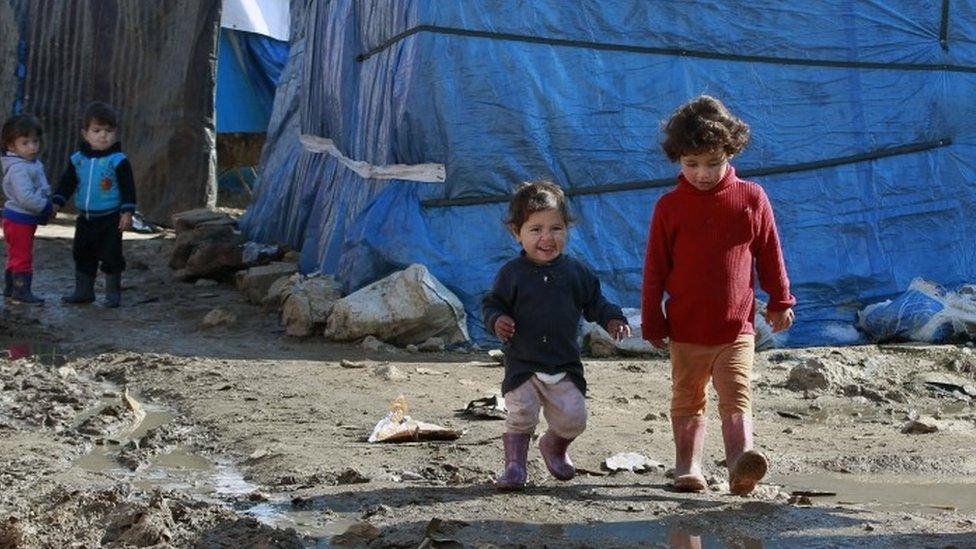Migrant crisis: What is the UK doing to help?
- Published
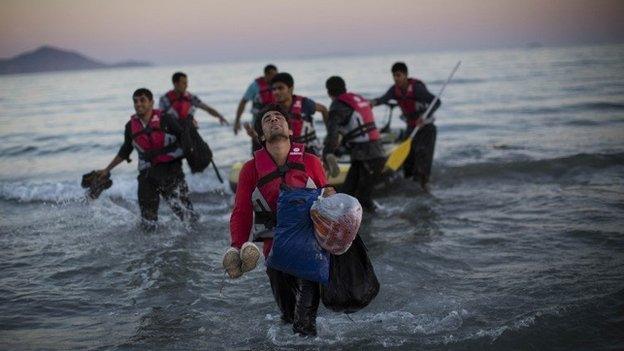
Tens of thousands of migrants have arrived in southern Europe in recent months
David Cameron has said the UK will accept 20,000 refugees from Syria by 2020. A further commitment to help unaccompanied child refugees may lead that figure to rise, but government sources say it will not change substantially.
Critics have urged the government to do more to help people fleeing conflict in Syria and elsewhere, including those who have made dangerous journeys from the Middle East and north Africa to Europe.
So what exactly is Britain doing to help?

What help has been offered?
The UK has already accepted about 1,000 refugees from Syria under the Vulnerable Persons Resettlement Programme (VPR). The government expanded the scheme last year, promising to take in 20,000 by 2020.
The government has also said it will accept more unaccompanied child refugees from camps in Syria and neighbouring countries.
The Home Office has not put a figure on how many under-18s will be taken in or over what period but sources have indicated the numbers involved would not significantly increase the current 20,000 commitment.
Scotland's First Minister Nicola Sturgeon offered her support to Mr Cameron and Northern Ireland's Deputy First Minister Martin McGuinness told the prime minister the country could take thousands more refugees; with "a couple of thousand" at first.
The Local Government Association, which represents English and Welsh local authorities, has said councils have the capability to meet the extra demand for necessary resources such as housing and schools.
More than 50 local authorities have been involved in accommodating Syrian arrivals so far.

What about financial help?
Mr Cameron has stressed that Britain is the second-largest bilateral donor (after the US) supporting Syrian refugees in the region.
The government says the UK has contributed £1.1bn since 2012 on food, tents and other humanitarian aid.
It has also said the UK is giving a further £10m to help vulnerable refugee minors already in Europe.
Some could be brought to the UK "where it is in their best interests". This is likely to involve those whose closest living relatives are already in the UK.

How many Syrians have been relocated or given asylum?
Almost 5,000 Syrians (including dependants) have been granted asylum in the UK since the Syrian conflict began in 2011, the government says. Those arrivals are outside the terms of the VPR and do not count towards the 20,000 figure.
Under the VPR, the government met an initial goal to bring 1,000 Syrian refugees to the UK by Christmas 2015 - exceeding that figure with the arrival of two groups at Stansted and Belfast in December.
In total, more than 25,000 people, external claimed asylum in the UK in the 12 months up to June 2015, and 11,600 received asylum or an alternative form of protection. Eritreans were the largest group making asylum applications (3,568), followed by Pakistanis (2,302).
The Office for National Statistics (ONS) said the number of applications remained "low relative to the peak number" of more than 84,000 in 2002 - when the highest proportions of asylum seekers, external came from Iraq, Zimbabwe and Afghanistan.
Asylum makes up a small proportion of those arriving in the UK, with official figures, external released in August showing net migration into the UK (the difference between the number entering and those leaving) hit an all-time high of 330,000 in the 12 months to March.

What will happen to Syrians brought to the UK?
People arriving in the UK in need of protection usually have to apply for asylum - and if this is granted they get "refugee" status. But those brought under VPR have not gone through this process.
Instead, they have been granted "humanitarian protection", a status normally used for people who "don't qualify for asylum", external but would be at "real risk of suffering serious harm", external in their home country.
Like people granted refugee status, those given humanitarian protection can stay for five years, after which they can apply to settle in the UK, external. People in both categories have the right to work and access public funds.

How does the UK compare with other EU countries?
Germany is receiving the most asylum applications in Europe - more than 315,000 in 2015 by the end of October.
In June, European leaders agreed a voluntary system for sharing the refugee burden across the EU - but the UK opted out.
According to figures from the EU statistics agency, Eurostat, although Germany had the most asylum applications in 2015, the surge of people arriving in Hungary meant it had the highest in proportion to its population.
More than 1,450 refugees per 100,000 of Hungary's local population claimed asylum in the first half of 2015. The figure for Germany was 323 and for the UK it was 30 applications for every 100,000 residents.
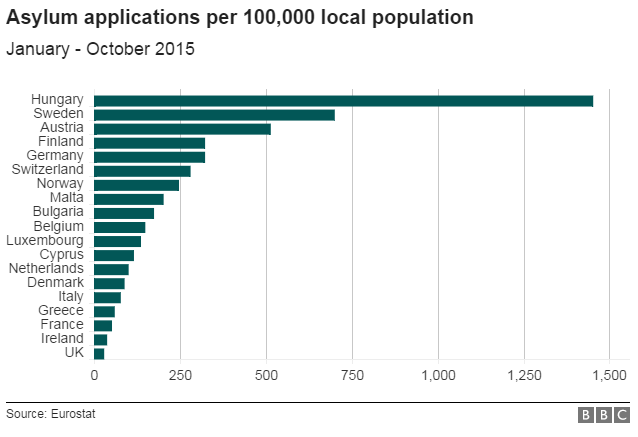

What have individuals and charities been doing?
Appeals were set up to specifically help those in Syria by major charities working in the area.
The British Red Cross and Oxfam are both running appeals and both reported an increase in support in the days immediately after a photograph of drowned Syrian boy, Alan Kurdi, emerged in September.
Save the Children has been campaigning for the UK to take 3,000 unaccompanied children from Europe, saying it would represent a "fair share" of the estimated 26,000 children who arrived in 2015 without any family.
Individuals have also been running appeals. A campaign set up by children's author Patrick Ness raised more than £150,000 for Save the Children in 24 hours.
An online petition calling on the UK to accept more refugees passed the 100,000 threshold, meaning it was eligible to be considered for a debate in Parliament.
- Published4 March 2016
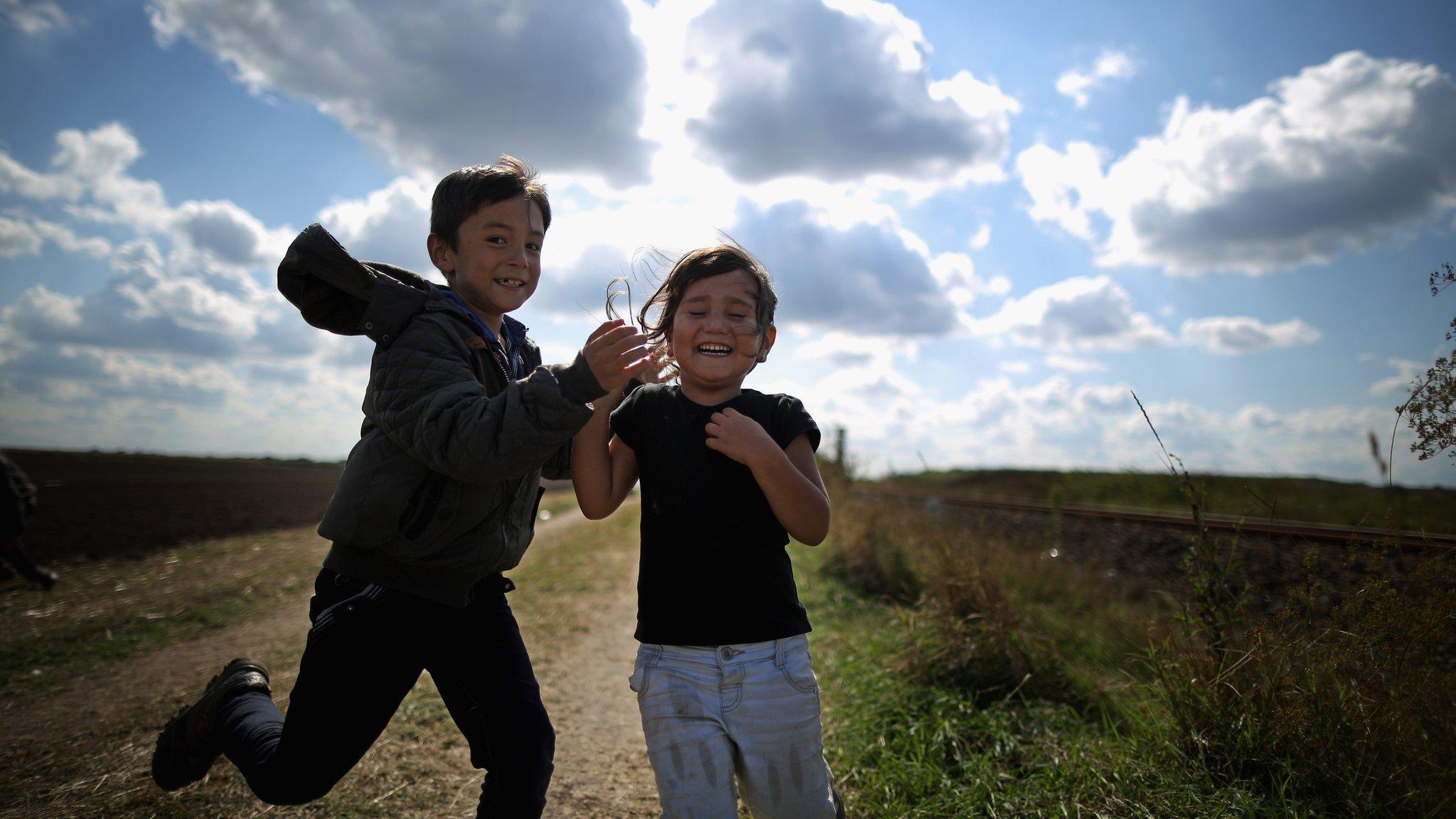
- Published4 September 2015
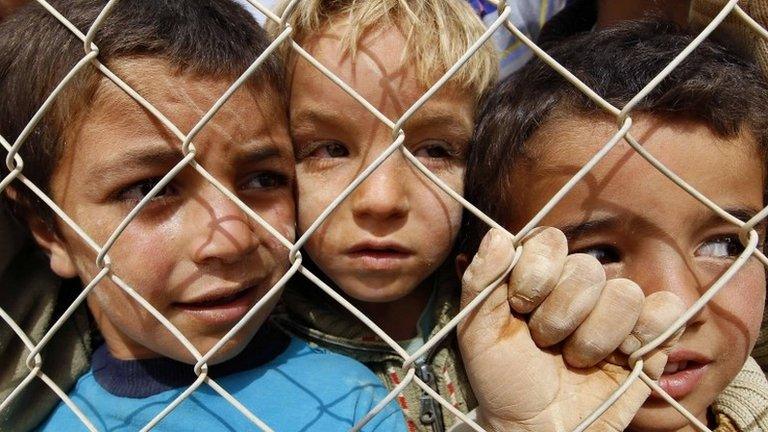
- Published28 January 2016
